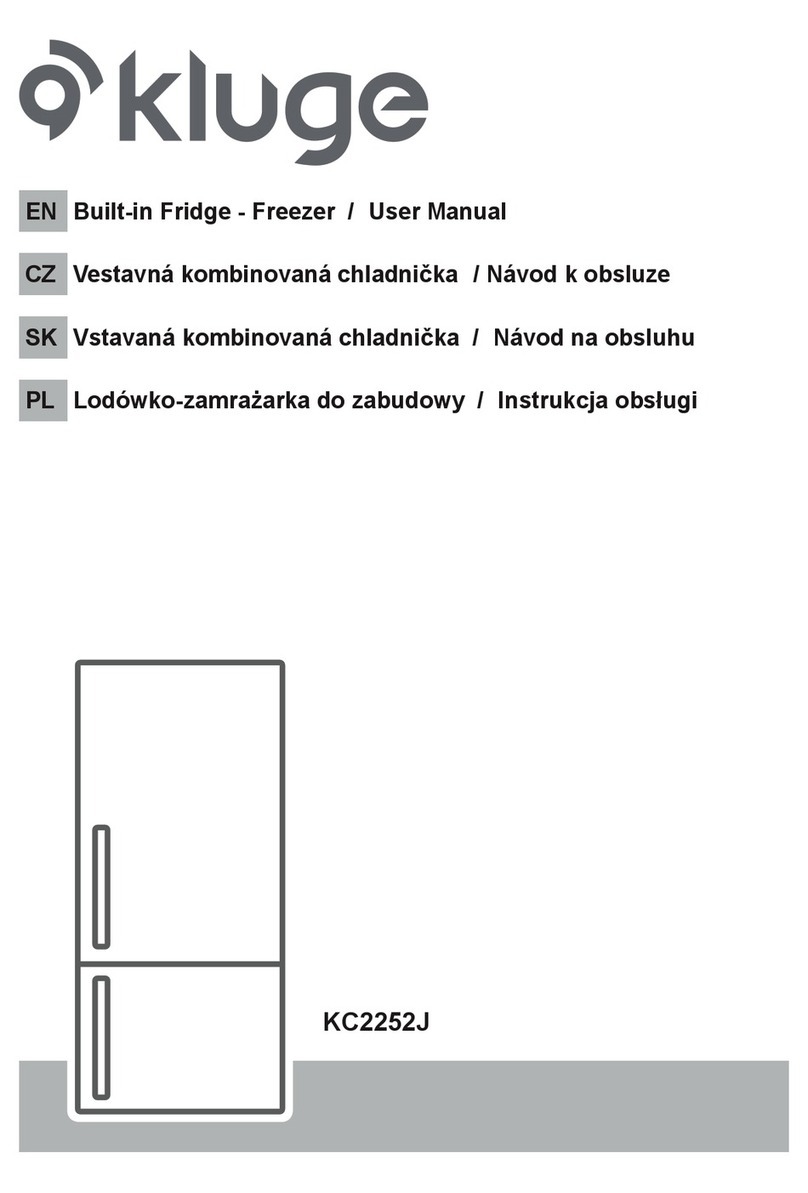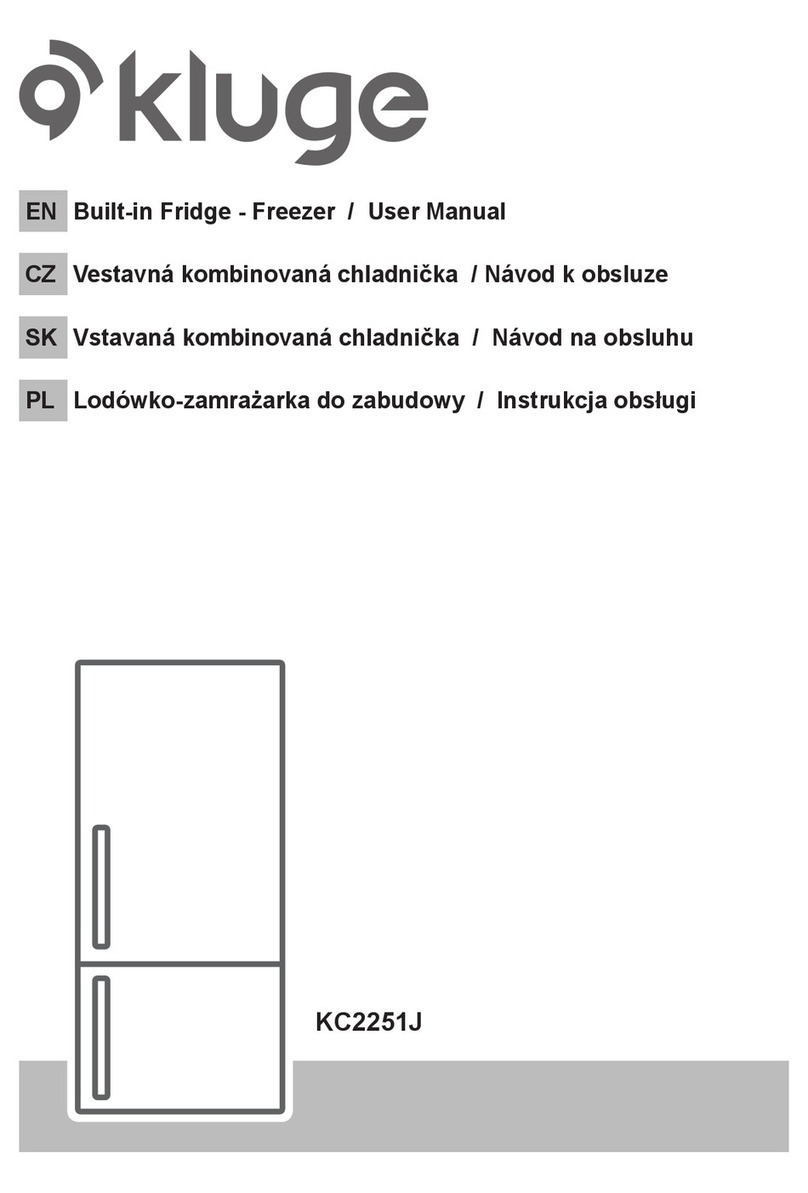
EN - 7 -
Installing and operating your fridge
Before starting to use your fridge, you should pay attention to the following points:
• Operating voltage for your fridge is 220-240 V at 50Hz.
• The plug must be accessible after installation.
• There can be an odour when you rst switch on the appliance. It will disappear after the
appliance starts to cool.
• Before making the connection to the power supply, ensure that the voltage on the
nameplate corresponds to the voltage of electrical system in your home.
• Insert the plug into a socket with an efcient ground connection. If the socket has
no ground contact or the plug does not match, we suggest you to call an authorized
electrician for assistance.
• The appliance must be connected with a properly installed fused socket. Power supply
(AC) and voltage at the operating point must correspond with the details on the name
plate of the appliance (name plate is located on the inside left of the appliance).
• We do not take responsibility for damages that occur due to ungrounded usage.
• Place your fridge in a place where it won't be exposed to direct sunlight.
• Your fridge should never be used outdoors or left under the rain.
• Your appliance should be at least 50 cm away from stoves, Gas ovens and heaters, and
should be at least 5 cm away from electrical ovens.
• When your fridge is placed next to a deep freezer, there should
be at least 2 cm between them to prevent humidity on the outer
surface.
• Do not place heavy items on the appliance.
• Clean the appliance thoroughly, especially in the interior, before
use (See Cleaning and Maintenance).
• Do not place glass bottles or beverage cans in the freezer
department. Bottles or cans may explode.
• Do not place explosive or ammable material in your fridge for
your safety. Place drinks with higher alcohol amount vertically and
by closing their necks tightly in the fridge department.
• When taking ice made in the freezer department, do not touch it,
ice may cause ice burns and/or cuts.
• Do not touch frozen goods with wet hands! Do not eat ice-cream and
ice cubes immediately after you have taken them out of the freezer
department!
• Do not re-freeze frozen goods after they have melted. This may cause health issues like
food poisoning.
• Do not cover the body or top of fridge with lace. This affects the performance of your
fridge.
• Do not operate any electrical appliances inside the refrigerator or freezer.
• Fix the accessories in the fridge during transportation to prevent damage to accessories.
• Do not use plug adapter.







































